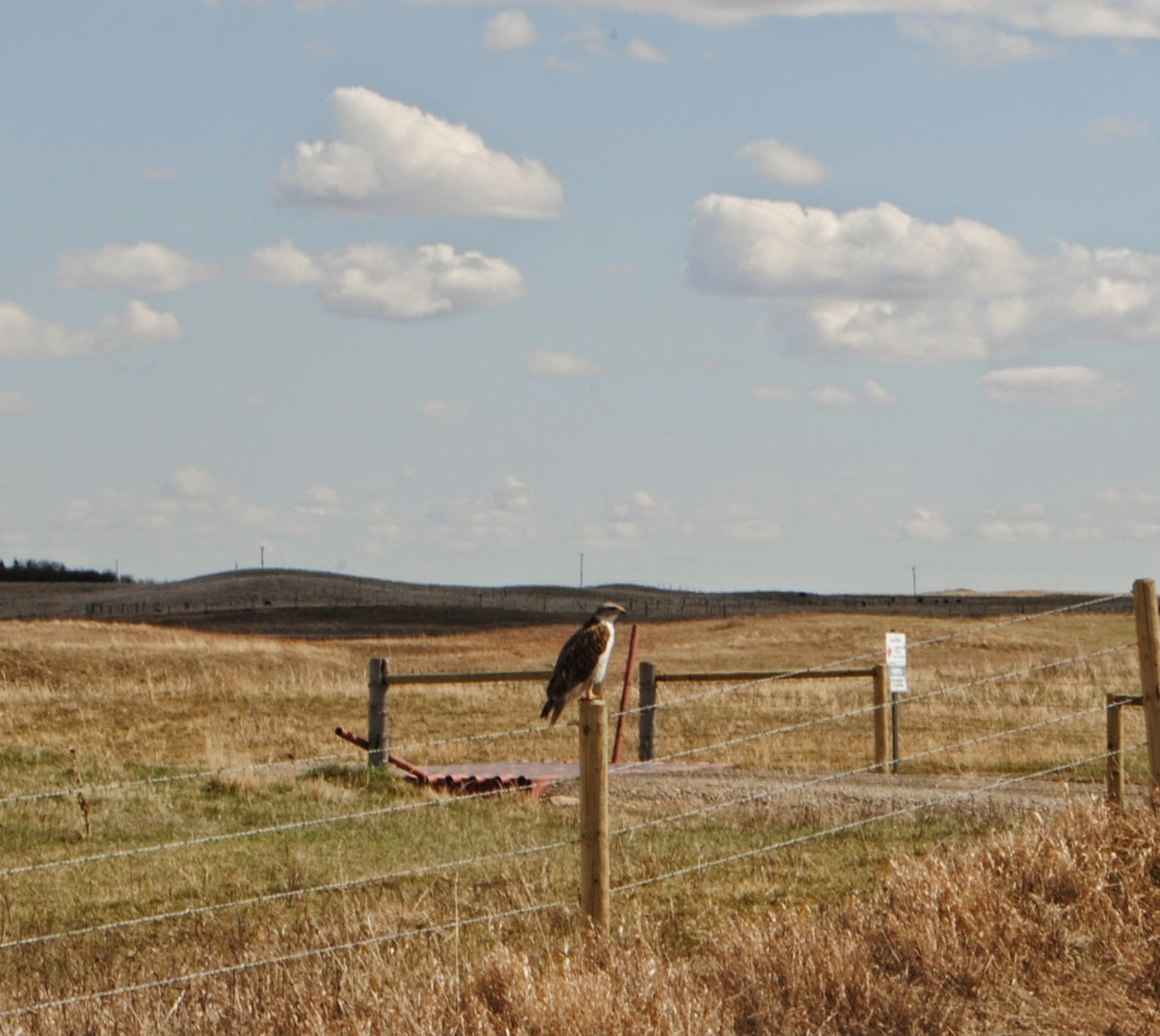It has long been believed that Ferruginous Hawks prefer nesting in lone standing trees in undisturbed native prairie. Although many of the nests we have found have fit this description, some hawks break these rules by nesting outside of houses and on roadsides where trucks kick up dust clouds as they roar past multiple times in an hour.
Here is a new active nest I found this year. This pair found a nice quiet tree row down a dirt track to call home. Many FEHA return to past nests each year and after years of refurbishment these historical nests get so large and heavy they can break the tree branches.
Up to now we have been collecting data from the road side using a spotting scope and binoculars to observe the incubating females. After weeks of being glued to the nest the dedicated mothers are getting fidgety. Some are looking into the nest and tucking their heads down which usually means someone has hatched. In the nest few weeks we will be visiting nests, taking pictures of the young and taking nest measurements. The data from these nest observations and visits will be used to determine the impact of different types of disturbances on the hawk breeding success.
The weather in southern Alberta involves long cold winters with hot and windy summers. This year it seems as though Spring lasted only a few days. Climate change will likely exasperate this already extreme climate. We have set up 4 weather stations this week. Data from these stations will allow Masters students at the University of Alberta to look for relationships between extreme weather events and nest failure.
The Great Horned Owls are weeks ahead of the hawks, these owlets were testing out their new flights feathers when I drove past.
Once free roaming the prairies by the millions, buffalo now live a fenced-in existence. Still, seeing these mothers and their calves enjoying the sun was a delight.
More Swainson's hawks, they are less flighty which makes them easier to photograph. This one wasn't so happy about all the attention and yelled at me as it flew away.
Next week will involve setting up bird song meters and looking into FEHA nests!
















